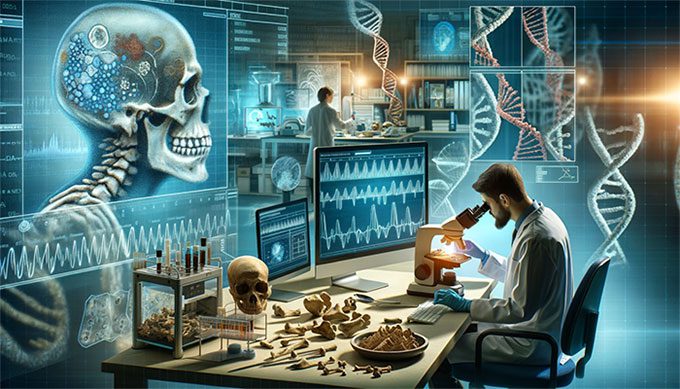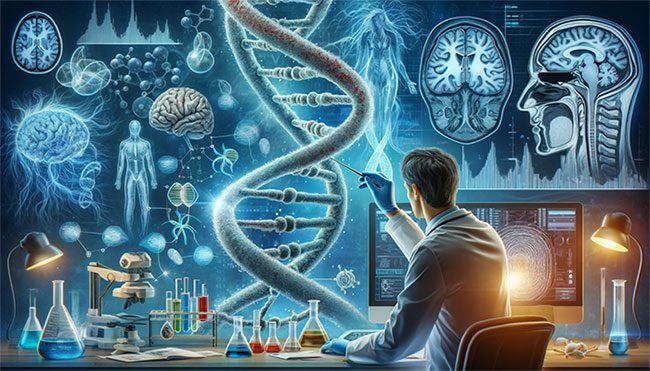In the field of ancient DNA research, a groundbreaking project has been undertaken by a multinational team of scientists, led by experts from the University of Cambridge and the University of Oxford. This project focuses on creating a unique ancient DNA gene bank, the result of five years of research and collaboration.
This gene bank contains DNA from nearly 5,000 ancient individuals, collected from bones and teeth in museums across Europe and Western Asia. This ancient DNA data was then compared with the DNA of 400,000 modern individuals in the UK from the UK Biobank, creating a comprehensive picture of evolutionary changes over time.

This gene bank contains DNA from nearly 5,000 ancient individuals. (Illustrative image).
Dr. William Barrie, a researcher at the University of Cambridge, and his team have analyzed ancient DNA and uncovered important information regarding the causes of multiple sclerosis (MS), which is prevalent among Northern Europeans.
According to the research, MS can be understood as a result of genetic adaptation to environmental conditions. The study indicates that we currently live in a modern world with hygiene conditions, dietary habits, and medical treatment options that differ from those of our ancestors, increasing the risk of diseases like MS.
The project has also received collaboration from museums across Europe and Western Asia. This collaboration has enabled the research team to create the gene bank. According to Dr. Barrie, the gene bank serves as an accurate tool, opening new opportunities for analysis and understanding of diseases based on ancient DNA. This project not only aids in the study of MS but also extends to other neurological and psychiatric disorders such as Parkinson’s, Alzheimer’s, ADHD, and schizophrenia.

This project has opened new insights into human genetic history. (Illustrative image).
For instance, the research on ancient gut bacteria also provides critical information about the development and spread of antibiotic resistance. Comparing DNA from ancient fossilized feces and samples from modern populations with industrialized and non-industrialized lifestyles has revealed changes in gut bacteria composition and the development of antibiotic resistance genes. This clarifies how studying ancient bacteria can provide new perspectives on the development and spread of antibiotic resistance, one of the greatest threats to global health today.
Additionally, the project has developed a new computational method for analyzing ancient DNA, particularly in determining the copy number of the X and Y chromosomes.
The ancient DNA research project led by scientists from the University of Cambridge and the University of Oxford has opened new insights into the genetic history of humanity and its close relationship with modern diseases. The international collaboration and support from museums and research organizations have made this project not only a scientific achievement but also an outstanding example of cooperation in international research.




















































